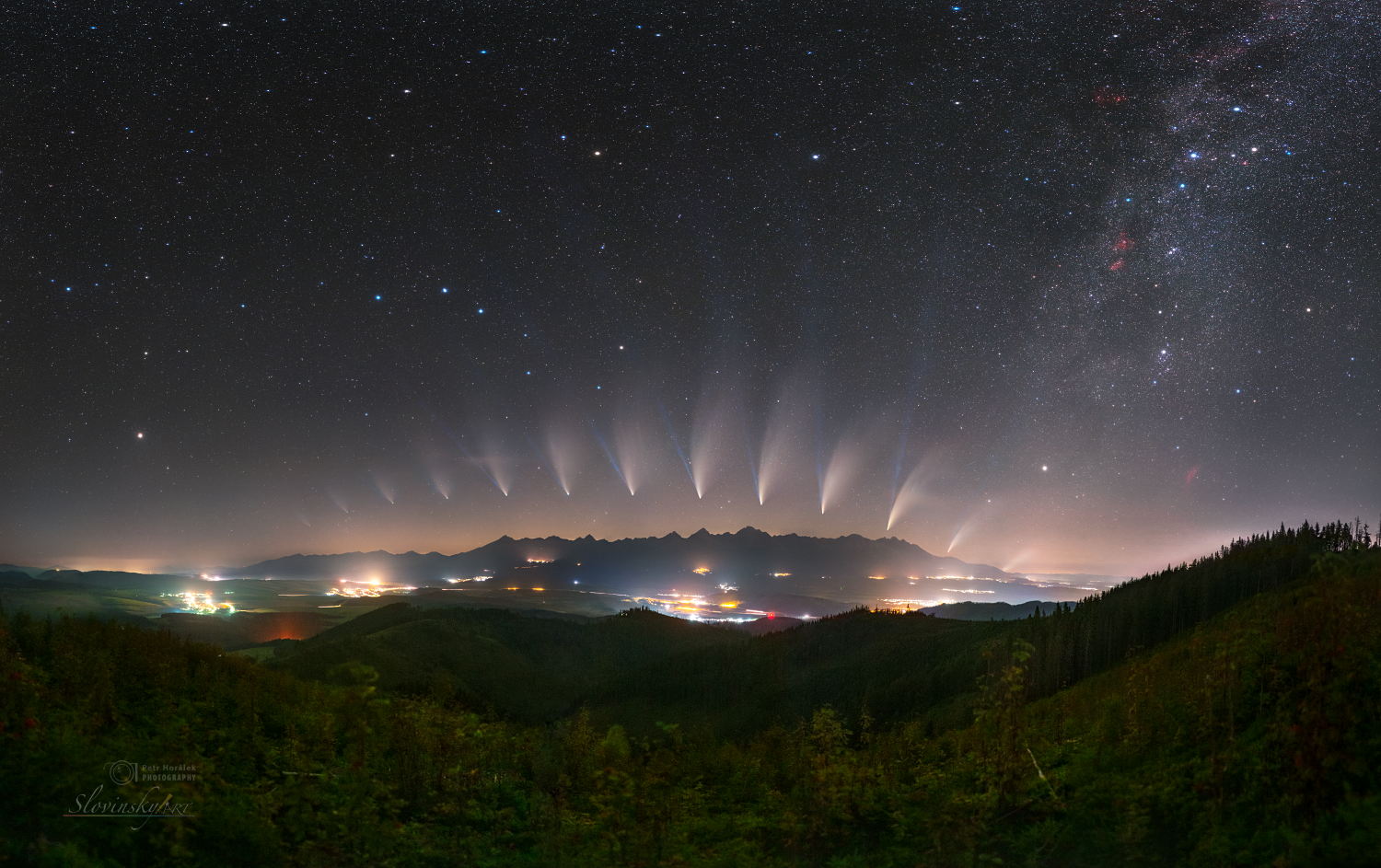
The Great Comet 2020, C/2020 F3 NEOWISE, remains a huge memory right now, however, hundreds of data still give the opportunity to show something new. Here comes one of most challenging but also educational result of the whole observation of the comet during its biggest brightness in July 2020. Comet made its closest approach to Sun on July 4th in distance 0.29 AU (closer then Mercury). After that, it became visible during dawn hours and easily photographed as it was a truly bright object (on right in the mosaic). The first days of July the comet was still disturbed by moonlight but quickly it became visible in darker nighttime showing longer and longer dust and ion tails. Both tails were nicely structured and very easily visible even to naked eyes. During mid-July, the comet became best visible as it was still effected by solar wind and also closing to Earth. On July 23rd, the comet approached closest to Earth in distance 0.69 AU. Its ion tail was longest, photographically over 40 degrees in the sky, while the comet beautifully moved under the Big Dipper. After that, it started to dim rapidly and Moon started to disturb again. Interesting is also a change of comet’s head, which was bright and yellow-white as it was mostly surrounded by dust from comet’s nucleus, however, after July 23rd it became greener and greener as the gas of coma was the primal source of light then.
The foreground for this mosaic is not chosen by chance, but with deep reason. Comet’s path took a shape of arc over the northern horizon, perfectly fitting with Slovakian High Tatras mountains, which are astronomically very important site. On the Lomnický štít summit you can visit one the highest placed astronomical observatory of Slovak Academy of Sciences in 2 634 meters above the sea level. Below the Lomnický štít peak is also located Skalnaté Pleso observatory. In 50′ of last century, famous Czechoslovak astronomer Antoním Mrkos discovered several comets from here, using only military binoculars.
Mosaic shows comet from July 9th to August 2nd (in UTC time; in Central Europan Summer Time last two positions would be August 1st and August 3rd as shooting was after midnight due to less moonlight), so almost a month path, with position of the comet every second day. You can also notice the Milky Way and deep sky objects on right of majestic Big Dipper asterism closer to the center. Image is result of sophisticated cooperation with great Slovakian photographer Tomáš Slovinský, who took the wonderful foreground panorama of High Tatras from Kozí Kameň mount, Slovakia (from where the path of comete perfectly projected over the High Tatras), and also lots of data of the comet when weather was not favorable for observation from the Czech Republic for me. As we were equiped with the same gear, it was easy to combine all data then and be able to finish this mosaic. For the foreground used Canon 6D modified, Sigma 50mm, f2.0, ISO 10000, 70x8s panorama from tripod with Optolong L-Pro filter. For the comet itself it was everyday shooting with 50mm (f2.2, ISO 1250, 30s exposures) or 24mm (same setting – to get whole ion tail) using Vixen Polarie mount.
More also on Tomáš Slovinský’s homepage.
Full credit: Petr Horálek, Tomáš Slovinský.



